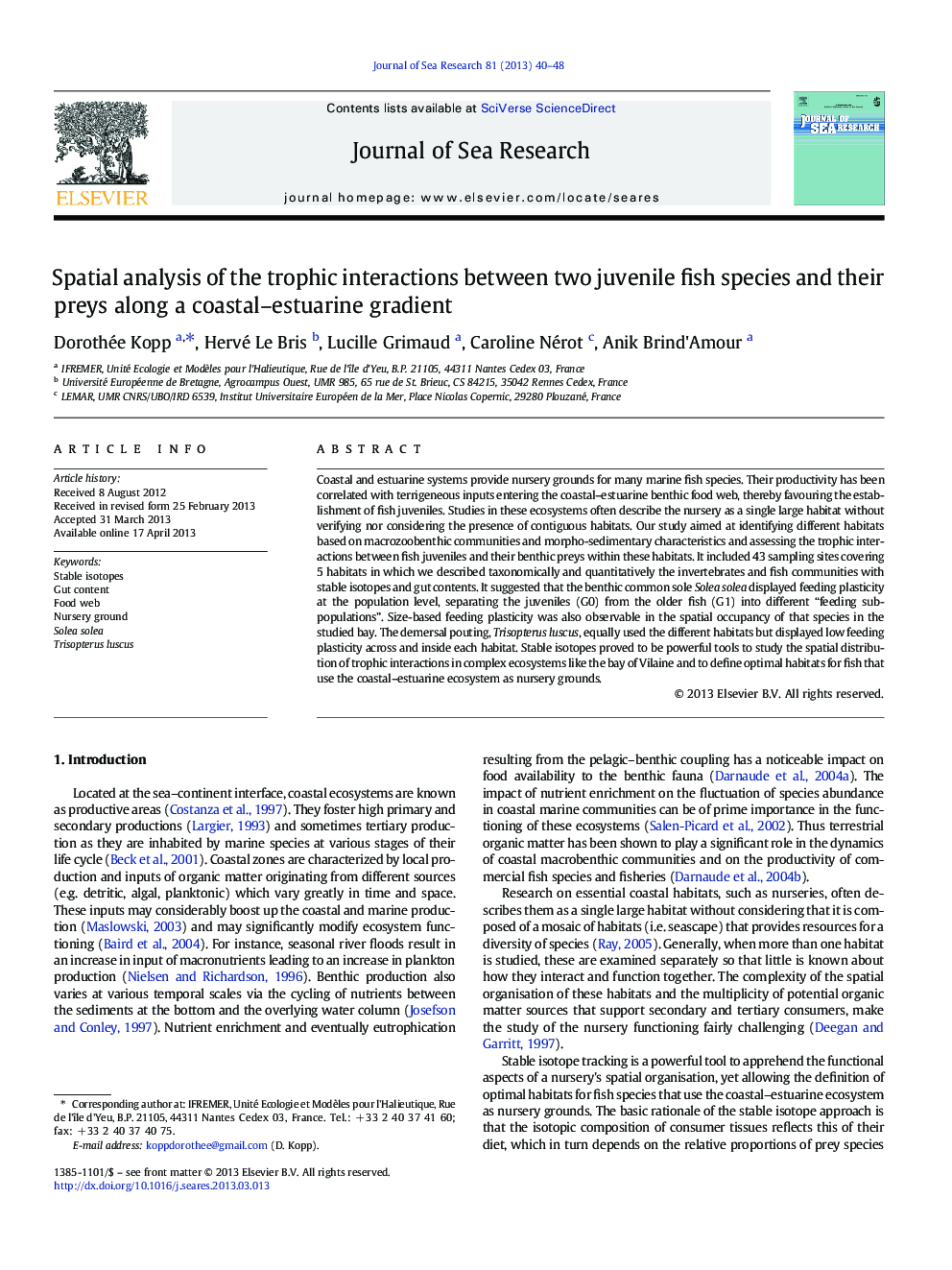| کد مقاله | کد نشریه | سال انتشار | مقاله انگلیسی | نسخه تمام متن |
|---|---|---|---|---|
| 4549875 | 1627493 | 2013 | 9 صفحه PDF | دانلود رایگان |

• Identification of habitats based on benthic macrofauna and morpho-sedimentary data.
• Assessment of trophic interactions between juveniles fish and their preys.
• Juveniles of sole displayed size-based feeding plasticity according to habitats.
• Juveniles of pouting equally used the different habitats.
Coastal and estuarine systems provide nursery grounds for many marine fish species. Their productivity has been correlated with terrigeneous inputs entering the coastal–estuarine benthic food web, thereby favouring the establishment of fish juveniles. Studies in these ecosystems often describe the nursery as a single large habitat without verifying nor considering the presence of contiguous habitats. Our study aimed at identifying different habitats based on macrozoobenthic communities and morpho-sedimentary characteristics and assessing the trophic interactions between fish juveniles and their benthic preys within these habitats. It included 43 sampling sites covering 5 habitats in which we described taxonomically and quantitatively the invertebrates and fish communities with stable isotopes and gut contents. It suggested that the benthic common sole Solea solea displayed feeding plasticity at the population level, separating the juveniles (G0) from the older fish (G1) into different “feeding sub-populations”. Size-based feeding plasticity was also observable in the spatial occupancy of that species in the studied bay. The demersal pouting, Trisopterus luscus, equally used the different habitats but displayed low feeding plasticity across and inside each habitat. Stable isotopes proved to be powerful tools to study the spatial distribution of trophic interactions in complex ecosystems like the bay of Vilaine and to define optimal habitats for fish that use the coastal–estuarine ecosystem as nursery grounds.
Journal: Journal of Sea Research - Volume 81, August 2013, Pages 40–48